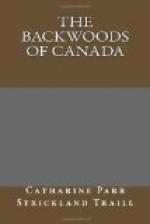At a time when the Spanish dollar, the piece of eight, as it was then called, was both finer and heavier than the coin now in circulation, its value at the mint price of silver** was found to be 4 shilling 6 pence sterling. Accordingly, the pound currency was fixed at 18 shillings sterling, and 90 pounds sterling was equal to 100 pounds currency, the rules of conversion being, add one-ninth to sterling to obtain currency, and deduct one tenth from currency to find the sterling. This was called the par of exchange, and was so then. So long as it continued correct, fluctuations were from a trifle above, to a trifle below par, and this fluctuation was a real premium or discount, governed by the cost of the transportation of bullion from the one to the other side of the Atlantic, an expense which now does not exceed, and rarely equals, 2 per cent. 4 shilling 6 pence has long ceased to be the value of the dollar. Both the weight and purity of the coin have been reduced, until its value in the London market*** is not more than 4 shillings 2 pence, the pound currency being consequently reduced to 16 shillings 8 pence sterling and 100 pounds sterling become equivalent to 120 pounds currency, or 480 dollars, the common average rate now given for the 100 pounds sterling bill of exchange in England.
[** The mint price then coincided more nearly with the market price than at present.]
[*** It is necessary to use the market price, as the difference between the mint and the market price is 4 per cent., and as the Spanish dollar possesses no conventional value, it is only worth what it will bring as an article of traffic.]
The Government, however, still sanction, nay, will not change, the old language, so that the difference is made up by adding what is commonly termed a premium. The difference between the real par, 4 shillings 2 pence, and the nominal par, 4 shillings 6 pence, is 4 pence or eight per cent. Thus the fluctuations, instead of being from 1 to 2 per cent. below, to 1 or 2 per cent. above the real par, are from 1 to 2 per cent. below, to 1 to 2 per cent. above 8 per cent. premium as it is called on the nominal par, or from 6 or 7 to 9 or 10 per cent. premium on the par. This leads to gross deception, and the emigrant in consequence is not unfrequently outrageously cheated by parties accounting to him for money obtained by sale of bills, minus this or some portion of this nominal premium. Nothing is more common than to hear the new comer boast that he has sold his bill on England for 8 per cent. premium, while in fact he has not received par value. As by the above changes 100 pounds sterling is shewn to be equal to 120 currency, or 480 dollars, the rule of conversion, in the absence of a law, where no understanding to the contrary existed, should be, add one-fifth to sterling money, and currency is obtained, or deduct one-sixth from currency, and sterling is found. An examination of the exchanges for ten years has proved this to be correct.




